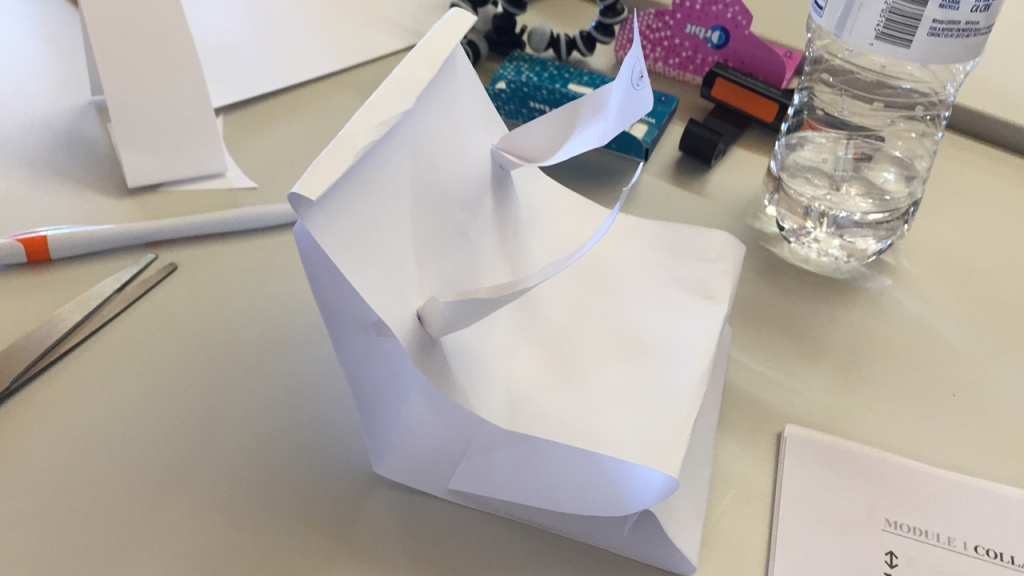I have facilitated a number of workshops called “Design Thinking: A Human Centered Approach” developed by an arts organization called COCAbiz. The companies I have worked with include accounting, marketing, health insurance, schools, banks, and agriculture. While I facilitate design, the workshops are couched in a broader leadership and innovation framework led by COCAbiz’s Steve Knight. What is fascinating is how teams work together and what they can create in just a couple hours.
The workshop has a five-step approach. In teams of four members explore feeling empathy, defining insights, ideating, prototyping and testing ideas. I give a little history of design thinking as popularized by IDEO and others, share personal case studies then we launch into two hours of making. The prompt they work on is “How might we create a wow that works sitting experience for Steve?” The final goal is to create a chair out of one sheet of cardboard. Teams ask Steve questions to learn to empathize and identify insights they can ideate on to define key features they might explore. Prototyping with small sheets of paper then allows them to use their hands to make shapes and structures that in turn facilitate discussion and comparison as they narrow the direction. They then test one agreed upon idea, or a combination of prototypes, by building one chair with a large sheet of cardboard. No glue or tape is allowed.
Having done a number of these now I have some insights:
Gaining empathy is hard work.
There is much discussion about “empathy” in design fields and many others. The basic idea is that getting to know your user the better you can create products and services for them. Ethnography is another method to gain empathy given that what people say is not always what they do, so observation is critical. Marketers use surveys or focus groups; others use large data sets to see trends and build from there. Designers though use small sample sizes to learn from and build off those insights combined with design trends in the market. Great insights always come from asking question that illicit a story beyond what your are trying to directly solve. Questions such as recalling early memories of comfort or places that invoked warmth and security are some that can inform a deeper understanding of people, and thus inform a more empathetic direction in the product.
Prototyping makes you think and talk critically.
Using one’s hands to make something forces exploration and is a form of thinking. What is fascinating to observe from groups of people that do not make physical things every day is how much conversation little pieces of paper in the form of chairs can generate. Describing how something works and why it will meet the user’s needs becomes real when seeing it, even if seemingly little half blobs of a chair. It generates debate and having many options forces comparison, which in turn helps identify key features that meet a user’s needs. The more prototypes the more teams can decide what to keep and what to toss. Often times we make the predictable, but by having many option on the table we start to see elements that build with others to create novel options.
Testing in small ways builds risk aversion.
“Fail faster, succeed sooner” attributed to David Kelly of IDEO is a core design idea used by many entrepreneurs. Entrepreneurs I think have a high innate tolerance for risk while designers I think do it in very small increments in order minimize the sense of risk over the entire process. A designers constant looping and testing helps form confidence in the final solution through incremental steps. When the workshop participants arrive at the finish line and chairs are lined up to test holding ten pounds, which is part of the challenge, the fear of failure I think is somewhat masked by having prototypes of many possibilities. In the end, with many colleagues presenting options, there is also the sense that one will win. From there they can keep iterating to build an ideal chair for Steve if they keep going for more rounds. And as Kelly might say, they have gained some creative confidence in the process.

